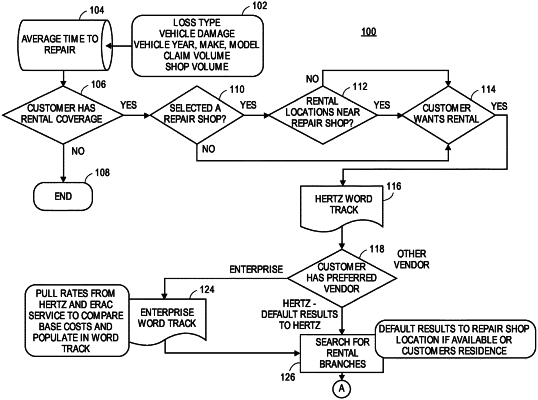| CPC G06Q 40/08 (2013.01) [G06N 20/00 (2019.01); G06Q 30/0645 (2013.01)] | 18 Claims |

|
1. A computer-implemented method for providing smart auto rental estimatics to a user, the method comprising:
training, via one or more processors, a machine learning model including a plurality of training parameters, the training including:
encoding historical claim information as labels in a labeled data set, wherein the historical claim information includes historical user characteristics, historical vehicle characteristics, and at least one of historical shop volume or historical claim volume, and the historical claim information is associated with at least one of known loss time to repair or known loss cost to repair;
initializing the plurality of training parameters to be random values; and
iteratively modifying the plurality of training parameters such that at least one of a predicted loss time to repair or a predicted loss cost to repair determined by the machine learning model using the plurality of training parameters and the historical claim information gradually converges to the at least one of known loss time to repair or known loss cost to repair;
receiving, via one or more processors, an auto loss report;
extracting, via one or more processors, machine learning parameters from the auto loss report, wherein the machine learning parameters comprise one or more user characteristics and one or more vehicle characteristics;
analyzing, via one or more processors, the machine learning parameters to identify a vehicle rental coverage associated with the user;
analyzing, via one or more processors and using the machine learning model, the machine learning parameters and volume data to determine at least one of (i) a loss time to repair and (ii) a loss cost to repair, the volume data corresponding to real-time information pertaining to claim volume and/or shop volume, and the loss time to repair indicating a wait time the user is predicted to require a rental vehicle;
calculating, via one or more processors, based on the at least one of (i) the loss time to repair and (ii) the loss cost to repair, and the vehicle rental coverage, a set of estimated out-of-pockets each corresponding to a respective vehicle class; and
transmitting, via one or more processors, the set of estimated out-of-pockets.
|